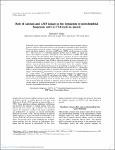| dc.description.abstract | Contractile activity induces mitochondrial biogenesis and increases glucose transport capacity
in muscle. There has been much research on the mechanisms responsible for these adaptations.
The present paper reviews the evidence, which indicates that the decrease in the levels of highenergy
phosphates, leading to activation of AMP kinase (AMPK), and the increase in cytosolic
Ca2+, which activates Ca2+/calmodulin-dependent protein kinase (CAMK), are signals that
initiate these adaptative responses. Although the events downstream of AMPK and CAMK
have not been well characterized, these events lead to activation of various transcription
factors, including: nuclear respiratory factors (NRF) 1 and 2, which cause increased expression
of proteins of the respiratory chain; PPAR-a, which up regulates the levels of enzymes of b
oxidation; mitochondrial transcription factor A, which activates expression of the mitochondrial
genome; myocyte-enhancing factor 2A, the transcription factor that regulates GLUT4
expression. The well-orchestrated expression of the multitude of proteins involved in these
adaptations is mediated by the rapid activation of PPARg co-activator (PGC) 1, a protein that
binds to various transcription factors to maximize transcriptional activity. Activating AMPK
using 5-aminoimidizole-4-carboxamide-1-b-D-riboside (AICAR) and increasing cytoplasmic
Ca2+ using caffeine, W7 or ionomycin in L6 myotubes increases the concentration of
mitochondrial enzymes and GLUT4 and enhances the binding of NRF-1 and NRF-2 to DNA.
AICAR and Ca-releasing agents also increase the levels of PGC-1, mitochondrial transcription
factor A and myocyte-enhancing factors 2A and 2D. These results are similar to the responses
seen in muscle during the adaptation to endurance exercise and show that L6 myotubes are a
suitable model for studying the mechanisms by which exercise causes the adaptive responses
in muscle mitochondria and glucose transport. | en_US |

